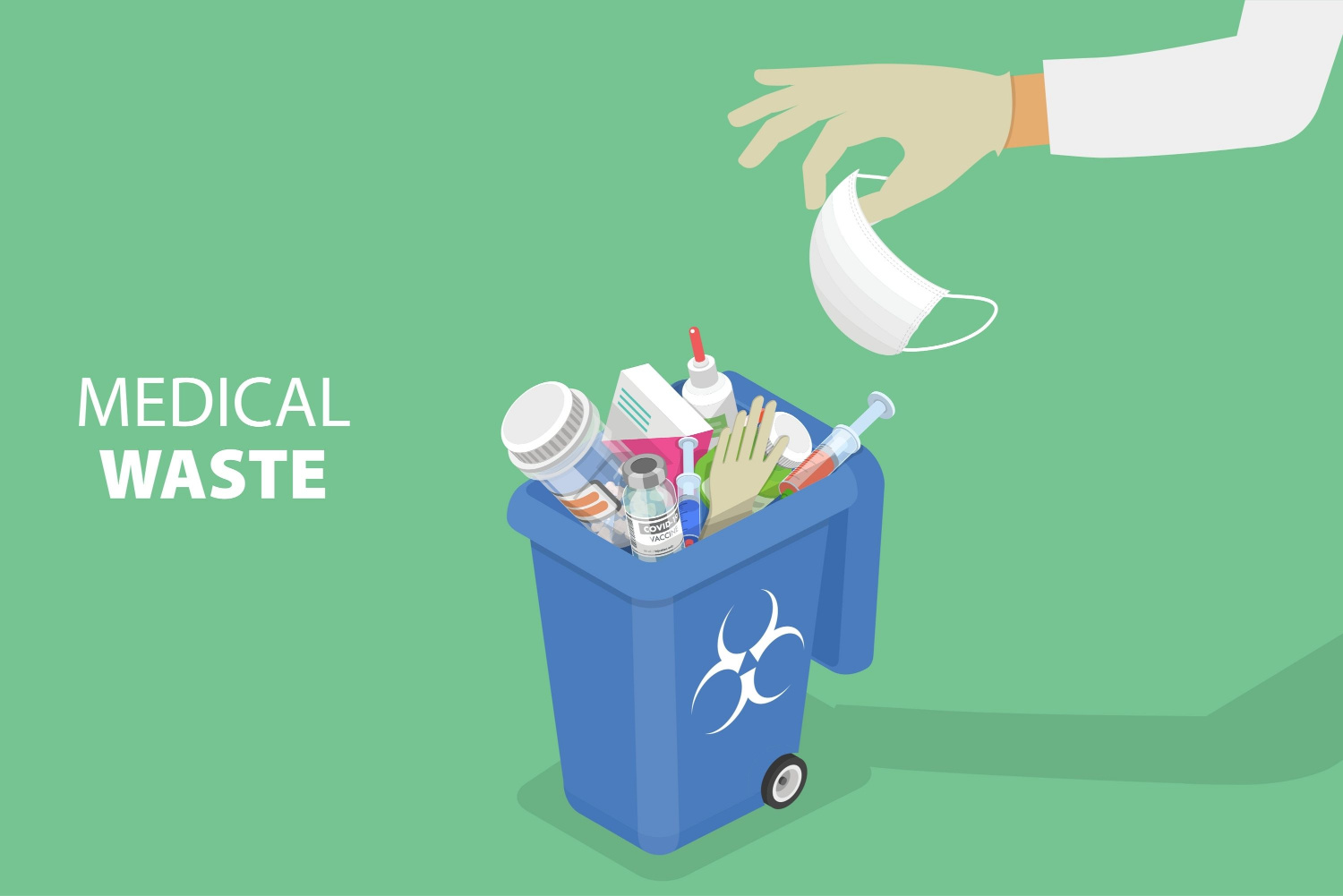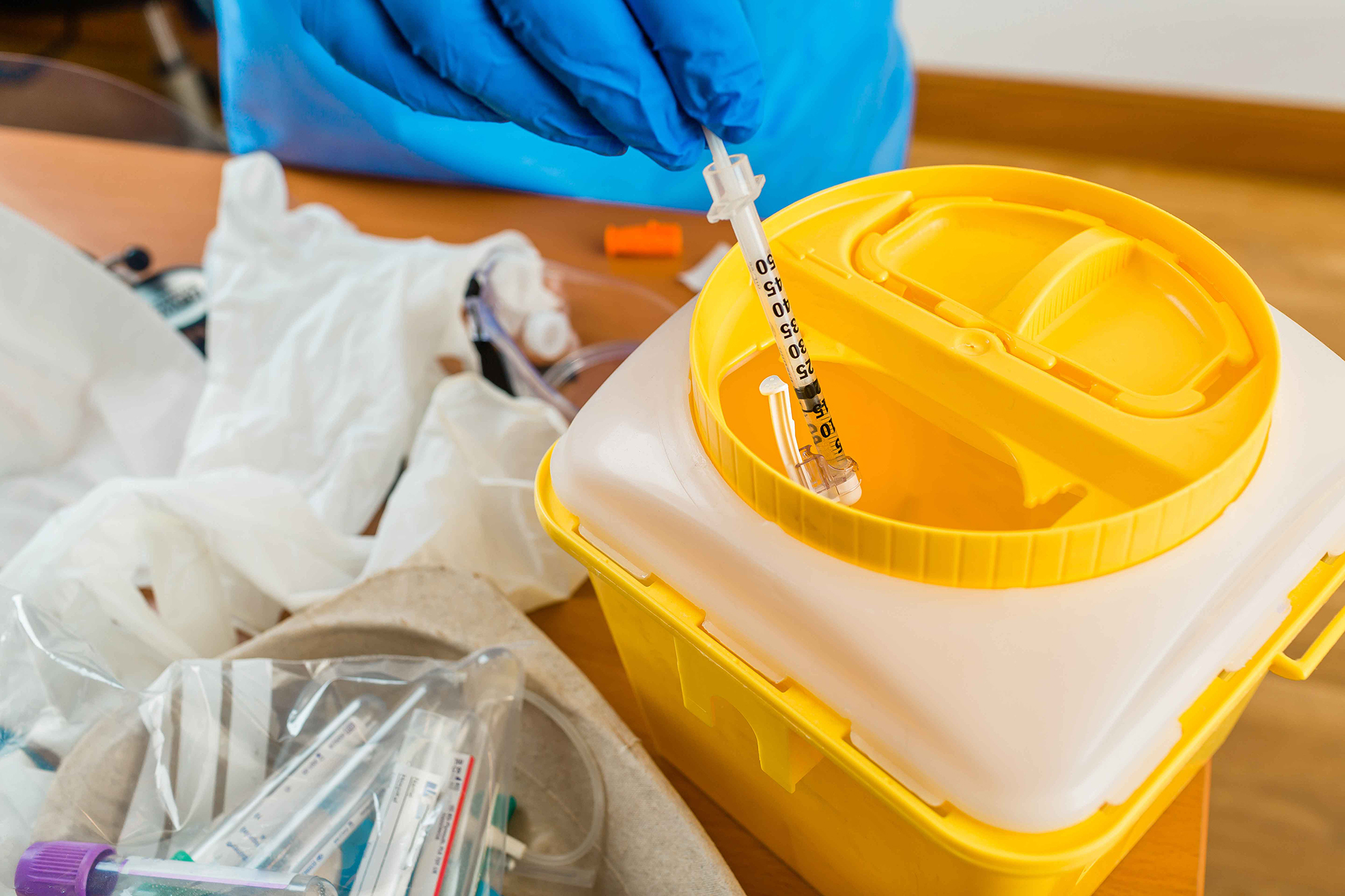Complete Medical Waste Removal Service: Smooth Disposal for Medical Care Facilities
Wiki Article
Ideal Practices for Medical Waste Administration
Clinical waste administration is an essential element of health care facilities' procedures to ensure the security of clients, staff, and the setting. Applying finest practices in clinical waste administration is crucial to decrease the dangers associated with unsafe waste.Partition and Categorization
In the area of medical waste monitoring, appropriate segregation and classification are vital practices for making certain the risk-free and efficient disposal of healthcare-related products. Medical waste is produced from various resources, including medical facilities, facilities, labs, and various other health care centers. It consists of a vast array of things, such as needles, syringes, bandages, handwear covers, and pharmaceutical waste.Partition involves the systematic separation of different types of medical waste based on their attributes and prospective dangers. Sharps waste, such as blades and needles, need to be positioned in puncture-resistant containers to prevent injuries and the spread of infectious diseases.
Categorization is the process of classifying medical waste right into various categories based on its potential hazards. WasteX Medical Waste Disposal. These classifications may consist of transmittable waste, hazardous waste, pharmaceutical waste, and general waste. By categorizing waste, healthcare centers can identify the appropriate disposal approaches and make sure compliance with regional policies and guidelines
Proper partition and classification of medical waste not just secure the health and wellness of medical care employees and the general public however likewise add to the total effectiveness and effectiveness of waste monitoring. It minimizes the risk of crashes, reduces environmental effects, and promotes responsible garbage disposal practices.
Correct Storage and Classifying
To make certain the risk-free and efficient disposal of clinical waste, medical care centers need to stick to correct storage and labeling techniques. Proper storage space and labeling play a crucial function in maintaining the honesty of medical waste administration systems and protecting the health and security of healthcare workers, people, and the general public.When it involves storage, it is necessary to have assigned locations especially designed for different sorts of clinical waste. These areas need to be secure, well-ventilated, and furnished with ideal containers that meet regulative criteria. Partition and categorization of waste ought to additionally be thought about to prevent cross-contamination and prospective threats.
Furthermore, appropriate labeling is crucial for effective waste management. Each container ought to be clearly identified with the proper icons, color-coding, and information about the waste it includes. Labels ought to include details such as the sort of waste, date of collection, and the name of the generator. This makes sure that all people managing the waste can conveniently identify and handle it properly.
Regular monitoring and inspection of storage space locations and containers are vital to recognize any kind of problems or infractions. Team needs to be trained on correct storage and labeling practices, stressing the importance of conformity with procedures and policies.
Safe Transport and Handling
Making certain the safe and secure and appropriate transport and handling of clinical waste is critical for preserving the integrity of waste monitoring systems and securing the health and wellness of all entailed. Medical waste, that includes products infected with contagious products, pharmaceuticals, and other harmful substances, have to be delivered in a manner that protects against leaks, spills, and possible contamination.It is necessary to use puncture-resistant and watertight containers that are especially designed for medical waste. Furthermore, waste needs to be segregated based on its nature and type to stop cross-contamination.
Throughout transport, it is necessary to make certain that waste containers are securely fastened and kept in a steady fashion. Vehicles used for delivering clinical waste must be equipped with suitable security functions, such as spill control systems, to lessen the threat of any spills or leaks (medical waste disposal). Vehicle drivers need to obtain training on correct handling and emergency situation feedback treatments to properly resolve any kind of unforeseen incidents
Furthermore, the transport and handling of medical waste should adhere to all relevant laws and standards established forth by regional, state, and government authorities. Routine evaluations and audits should be conducted to evaluate compliance and identify any kind of locations for enhancement.

Conformity With Regulatory Standards
dig this Preserving conformity with governing guidelines is important for effective clinical waste monitoring. These guidelines are established to shield public health and wellness and the environment by guaranteeing that clinical waste is appropriately dealt with, treated, and disposed of. medical waste disposal. Conformity with regulative guidelines aids to prevent the spread of transmittable illness, decrease prospective hazards, and lower the general influence of clinical waste on the environmentTo accomplish compliance, medical care facilities have to stay notified about the certain regulations regulating medical waste administration in their jurisdiction. These guidelines may vary from nation to country, and also within various states or regions. It is necessary for health care centers to have an extensive understanding of these standards and to apply suitable strategies and procedures to make certain compliance.
One secret facet of compliance is the appropriate partition and labeling of different types of clinical waste. This includes separating sharps from various other waste, along with categorizing waste based on its possible risks. Healthcare facilities have to likewise make certain that medical waste is kept in proper containers which these containers are correctly identified and secured.
In addition, compliance with regulatory guidelines needs medical care facilities to establish proper training and education programs for personnel entailed in clinical waste monitoring - WasteX Medical Waste Disposal. This consists of providing training on waste segregation, dealing with, and disposal procedures, as well as the proper use of individual safety tools
Normal surveillance and audits are likewise vital to make sure ongoing compliance with regulatory guidelines. This involves conducting normal inspections of waste storage space locations, documenting waste management treatments, and keeping records of waste disposal.
Reliable Disposal Techniques
Health care facilities have to use efficient disposal methods for correct monitoring of medical waste - WasteX Medical Waste Disposal. Incorrect disposal of medical waste can posture severe health and ecological dangers. There are several techniques that can be used to properly throw away medical waste, making certain the security of health care employees, clients, and the basic publicOne frequently used technique is incineration. Burners can safely melt medical waste at high temperature levels, reducing the quantity and destroying any type of possibly damaging virus. Nevertheless, incineration can be pricey and may release unsafe contaminants right into the air if not appropriately regulated.
An additional technique is autoclaving, which entails subjecting the waste to high-pressure heavy steam. This process eliminates bacteria, infections, and other microbes, making the waste secure for disposal in regular waste streams. Autoclaving is a reliable and eco-friendly method, however it calls for specialized devices and experienced workers.
Chemical sanitation is also utilized in many cases, where fluid chemicals are related to the waste to disinfect it. This technique is much less commonly utilized as a result of problems concerning the effectiveness of chemical sanitation and the capacity for chemical deposits to infect the setting.
Along with these methods, health care centers need to additionally implement appropriate segregation, product packaging, and labeling of clinical waste to guarantee its secure handling and disposal. Regular training and education of personnel on appropriate waste administration techniques are essential to preserving efficient disposal techniques.
Final Thought

Clinical waste administration is an essential facet of healthcare facilities' operations to make sure the security of clients, team, and the setting. Implementing ideal methods in medical waste administration is vital to minimize the threats associated with unsafe waste. These classifications may consist of infectious waste, harmful waste, pharmaceutical waste, and general waste.In verdict, executing best techniques for medical waste monitoring is vital for ensuring the security of medical care workers, people, and the environment. By appropriately segregating and categorizing waste, keeping and classifying it correctly, guaranteeing secure transportation and handling, conforming with governing guidelines, and utilizing reliable disposal methods, health care centers can properly handle and lessen the risks associated with medical waste.
Report this wiki page